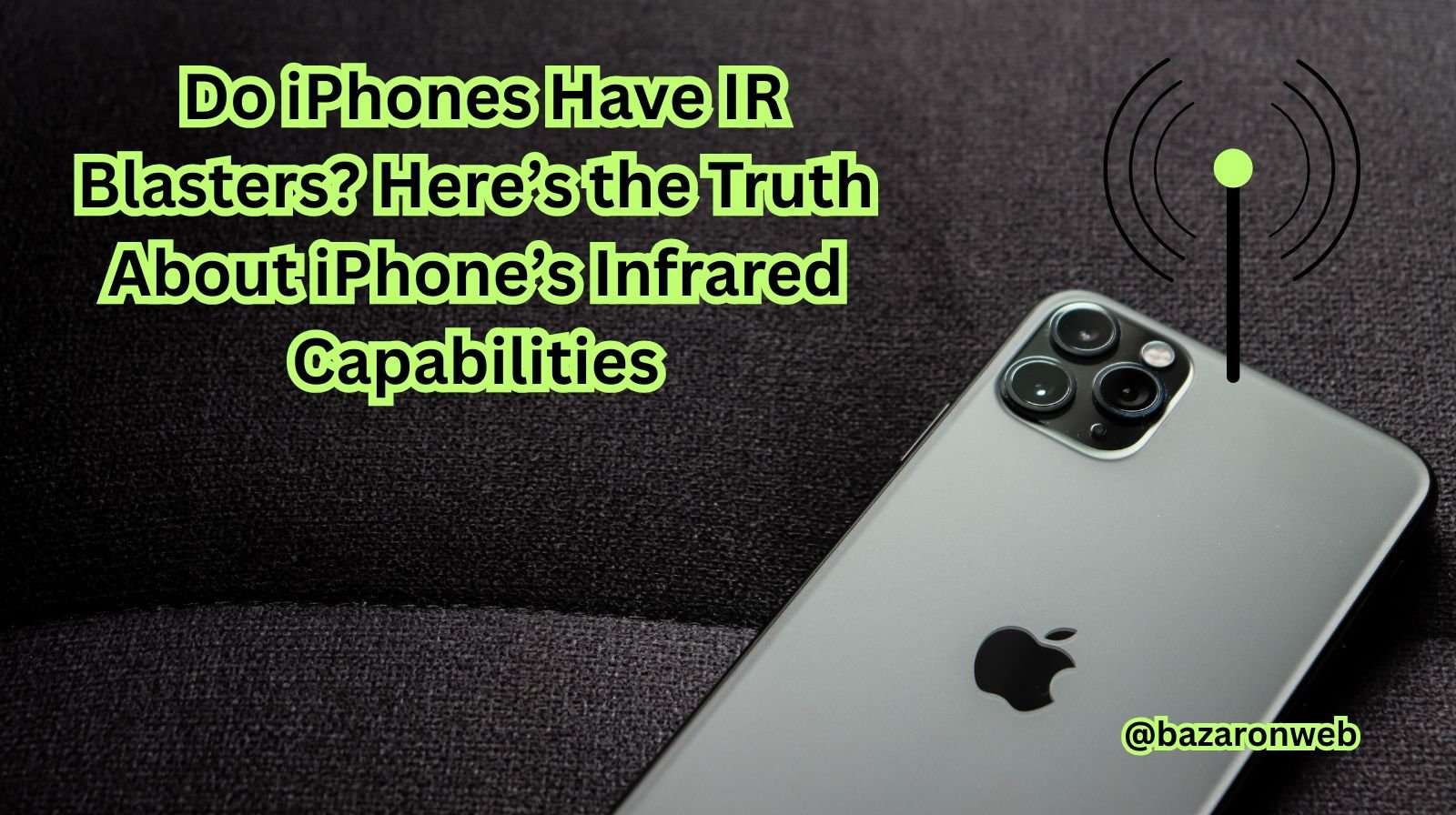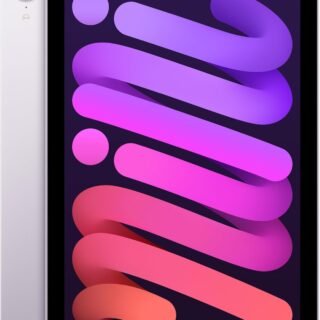Category
Popular Articles
- AI (12)
- Android (38)
- App Suggest (4)
- Apple (15)
- Apple TV (2)
- Bluetooth (3)
- Cars (2)
- ChatGpt (1)
- Chrome (2)
- Did you know? (1)
- E-Commerce News (1)
- Ecommerce Websites business (7)
- Electronics Shopping (5)
- Fashion Tips (3)
- Gaming (4)
- Google Gemini (3)
- Hair Care Tips (2)
- How to (13)
- iCloud (1)
- Infotainment System (1)
- Iphone (101)
- Job Posting (1)
- Lifestyle (3)
- Mac (20)
- Mobile Games (1)
- Netflix (1)
- Online Shopping Websites (2)
- Personal Finance Management (3)
- Product Reviews (3)
- Roku TV (4)
- Samsung (9)
- Shopping Tips (10)
- Spotify (1)
- Tech (93)
- Windows 11 (19)
- Zero Waste (3)
Discounted Products
-
 Leo Creation 144 TC Cotton Double Jaipuri Prints Flat Bedsheet(Pack of 1, Blue, Gree, Red, Grey, Light Grey)
Leo Creation 144 TC Cotton Double Jaipuri Prints Flat Bedsheet(Pack of 1, Blue, Gree, Red, Grey, Light Grey)
₹2,999.00Original price was: ₹2,999.00.₹329.00Current price is: ₹329.00. -
 Home Garage 210 TC Cotton King Floral Fitted (Elastic) Bedsheet(Pack of 1, Grey)
Home Garage 210 TC Cotton King Floral Fitted (Elastic) Bedsheet(Pack of 1, Grey)
₹999.00Original price was: ₹999.00.₹299.00Current price is: ₹299.00. -
 Goodrik 140 TC Cotton Double 3D Printed Flat Bedsheet(Pack of 1, Brown)
Goodrik 140 TC Cotton Double 3D Printed Flat Bedsheet(Pack of 1, Brown)
₹499.00Original price was: ₹499.00.₹229.00Current price is: ₹229.00. -
 GLOBALSHOP 350 TC Microfiber Double Floral Flat Bedsheet(Pack of 1, Multicolor)
GLOBALSHOP 350 TC Microfiber Double Floral Flat Bedsheet(Pack of 1, Multicolor)
₹1,250.00Original price was: ₹1,250.00.₹263.00Current price is: ₹263.00. -
 RisingStar 250 TC Microfiber King Printed Fitted (Elastic) Bedsheet(Pack of 1, FITTED-ROUND-CIRCLES-PREMIUM)
RisingStar 250 TC Microfiber King Printed Fitted (Elastic) Bedsheet(Pack of 1, FITTED-ROUND-CIRCLES-PREMIUM)
₹2,299.00Original price was: ₹2,299.00.₹299.00Current price is: ₹299.00. -
 Home Garage 210 TC Cotton King Floral Fitted (Elastic) Bedsheet(Pack of 1, Fitted Black Green)
Home Garage 210 TC Cotton King Floral Fitted (Elastic) Bedsheet(Pack of 1, Fitted Black Green)
₹1,299.00Original price was: ₹1,299.00.₹299.00Current price is: ₹299.00. -
 Home Garage 180 TC Cotton King 3D Printed Flat Bedsheet(Pack of 1, White)
Home Garage 180 TC Cotton King 3D Printed Flat Bedsheet(Pack of 1, White)
₹999.00Original price was: ₹999.00.₹229.00Current price is: ₹229.00. -
 Home Sizzler 153 cm (5 ft) Polyester Room Darkening Window Curtain (Pack Of 2)(Floral, Maroon)
Home Sizzler 153 cm (5 ft) Polyester Room Darkening Window Curtain (Pack Of 2)(Floral, Maroon)
₹799.00Original price was: ₹799.00.₹299.00Current price is: ₹299.00. -
 Panipat Textile Hub 152.4 cm (5 ft) Polyester Window Curtain (Pack Of 2)(Solid, Aqua)
Panipat Textile Hub 152.4 cm (5 ft) Polyester Window Curtain (Pack Of 2)(Solid, Aqua)
₹1,899.00Original price was: ₹1,899.00.₹299.00Current price is: ₹299.00. -
 Home Sizzler 214 cm (7 ft) Polyester Semi Transparent Door Curtain (Pack Of 2)(Floral, Maroon)
Home Sizzler 214 cm (7 ft) Polyester Semi Transparent Door Curtain (Pack Of 2)(Floral, Maroon)
₹1,199.00Original price was: ₹1,199.00.₹399.00Current price is: ₹399.00. -
 Home Sizzler 153 cm (5 ft) Polyester Room Darkening Window Curtain (Pack Of 2)(Floral, Brown)
Home Sizzler 153 cm (5 ft) Polyester Room Darkening Window Curtain (Pack Of 2)(Floral, Brown)
₹799.00Original price was: ₹799.00.₹299.00Current price is: ₹299.00. -
 Stella Creations 214 cm (7 ft) Polyester Room Darkening Door Curtain (Pack Of 2)(Abstract, Brown)
Stella Creations 214 cm (7 ft) Polyester Room Darkening Door Curtain (Pack Of 2)(Abstract, Brown)
₹1,299.00Original price was: ₹1,299.00.₹449.00Current price is: ₹449.00. -
 Homefab India 152.5 cm (5 ft) Polyester Room Darkening Window Curtain (Pack Of 2)(Floral, Light Blue)
Homefab India 152.5 cm (5 ft) Polyester Room Darkening Window Curtain (Pack Of 2)(Floral, Light Blue)
₹1,199.00Original price was: ₹1,199.00.₹319.00Current price is: ₹319.00. -
 Urban Home 214 cm (7 ft) PVC Transparent Door Curtain Single Curtain(Solid, Off White)
Urban Home 214 cm (7 ft) PVC Transparent Door Curtain Single Curtain(Solid, Off White)
₹699.00Original price was: ₹699.00.₹203.00Current price is: ₹203.00. -
 Panipat Textile Hub 213 cm (7 ft) Polyester Door Curtain (Pack Of 2)(Solid, Brown)
Panipat Textile Hub 213 cm (7 ft) Polyester Door Curtain (Pack Of 2)(Solid, Brown)
₹1,199.00Original price was: ₹1,199.00.₹349.00Current price is: ₹349.00.
Affiliate Links
Promotion

Imagine being able to use your iPhone as a universal remote — controlling your TV, air conditioner, or even your soundbar right from your phone. For Android users, this isn’t a fantasy. Many Android phones, especially older models from Xiaomi, Huawei, and Samsung, came with IR blasters (Infrared Blasters) built in. But what about iPhones?
If you’ve ever looked at the top edge of your iPhone and wondered, “Does this have an IR blaster?” — you’re not alone. It’s a common question among Apple users who love smart home convenience and remote control functionality.
In this article, we’ll dive deep into whether iPhones have IR blasters, why Apple didn’t include one, what alternatives exist, and how you can still control your devices using your iPhone.
Let’s uncover the truth about IR blasters and iPhones.
1. What is an IR Blaster?
An IR Blaster (Infrared Blaster) is a small hardware component that emits infrared light signals. These signals are used to communicate with and control electronic devices that have IR receivers — such as:
- TVs
- DVD/Blu-ray players
- Air conditioners
- Projectors
- Audio systems
Essentially, an IR blaster lets your phone function like a universal remote control. When paired with the right app, it can replace dozens of remotes around your home.
IR technology is similar to the one used in your regular TV remote — it transmits signals via invisible infrared light.
2. Do iPhones Have IR Blasters?
The short answer is no — iPhones do not come with built-in IR blasters.
From the first iPhone in 2007 to the latest iPhone 17 series in 2025, Apple has never included an IR blaster in any of its smartphones. That means you cannot directly use your iPhone as a remote control for your TV or other IR-based devices out of the box.
You might see a small black dot near your iPhone’s camera or front sensor, but that’s not an IR blaster — it’s either:
- A proximity sensor (to detect when the phone is near your face during calls), or
- A Face ID sensor (which uses infrared light for facial recognition, but not for device control).
So, while your iPhone does have infrared technology inside (for Face ID), it’s not an IR blaster and cannot be used to control TVs or appliances.
3. Why Don’t iPhones Have IR Blasters?
Apple’s decision not to include an IR blaster isn’t an accident. There are clear reasons behind it — both technical and strategic.
a. Shift Toward Smart Connectivity
Apple focuses on Wi-Fi and Bluetooth for device communication. These wireless technologies are faster, more versatile, and secure compared to IR.
Instead of relying on IR signals, Apple pushes for smart home integration using HomeKit, which connects devices through Wi-Fi.
b. Minimalist Hardware Design
Apple’s design philosophy values simplicity and sleekness. Adding an IR blaster would require an extra component that doesn’t align with their clean, minimalist design goals.
c. Smart Home Ecosystem
Apple wants you to control your smart home devices using Siri and the Apple Home app, not an IR remote. This aligns with their ecosystem approach — encouraging users to invest in HomeKit-compatible smart devices rather than legacy IR-controlled ones.
d. Decline of IR in Modern Devices
Most modern electronics — like smart TVs and speakers — now rely on Bluetooth or Wi-Fi, not infrared. Apple prefers investing in future-ready technologies rather than outdated ones.
4. iPhones and Infrared: The Confusion Explained
The confusion arises because Face ID uses infrared sensors.
Apple’s TrueDepth camera system (found in iPhones with Face ID) uses infrared light to map your face in 3D and securely unlock your device.
However, these IR sensors are:
- One-way only (they detect, not transmit).
- Restricted to facial recognition functions.
So while your iPhone technically emits infrared light for Face ID, it’s not the same as an IR blaster used for remote control purposes.
5. Can You Add IR Blaster Functionality to Your iPhone?
Yes — even though iPhones don’t come with built-in IR blasters, you can add one externally using third-party accessories.
a. External IR Blaster Dongles
There are plug-in accessories available online that you can connect via the Lightning port or USB-C port (for newer iPhones). These act as external IR blasters.
Popular options include:
- AnyMote Home
- MoKo IR Adapter
- Zaza Remote Dongle
Once connected, you can use compatible apps to control TVs, ACs, and other devices.
b. Smart Wi-Fi IR Blasters (Smart Hubs)
A smarter approach is using a Wi-Fi-based IR hub, like:
- BroadLink RM4 Mini / Pro
- SwitchBot Hub 2
- Govee Smart IR Controller
These devices connect to your Wi-Fi network and emit IR signals to control your home electronics. You can then control everything using your iPhone via an app or even with Siri voice commands (through Apple HomeKit or Shortcuts integration).
This method is more reliable and doesn’t require plugging anything directly into your iPhone.
6. How to Use Your iPhone as a Remote Control (Without an IR Blaster)
Even without an IR blaster, there are multiple ways to control devices using your iPhone:
a. Smart TV Apps
Most modern TVs (Samsung, LG, Sony, TCL, etc.) offer remote apps that work via Wi-Fi.
You can download them from the App Store and connect them to your TV easily.
Examples:
- LG ThinQ
- Samsung SmartThings
- Sony Bravia TV Remote
- Roku Mobile App
Once connected, you can adjust volume, switch inputs, and even type using your iPhone.
b. Apple TV Remote App
If you own an Apple TV, you don’t need an IR blaster at all. Your iPhone already has a built-in Apple TV Remote feature in Control Center.
To access it:
- Swipe down from the top-right corner of your iPhone.
- Tap the Remote icon.
- Control your Apple TV instantly.
c. HomeKit and Siri Integration
For smart home devices compatible with Apple HomeKit, you can use Siri to control them via Wi-Fi.
For example:
- “Hey Siri, turn on the TV.”
- “Hey Siri, set the AC to 22 degrees.”
This method replaces the need for IR entirely.
7. Advantages of Using Smart Wi-Fi Controls Over IR
While IR blasters are handy, Wi-Fi and Bluetooth controls have several advantages:
| Feature | IR Blaster | Wi-Fi/Bluetooth |
|---|---|---|
| Range | Limited (line-of-sight) | Long-range (works across rooms) |
| Connectivity | One device at a time | Multiple devices simultaneously |
| App Integration | Basic | Smart assistants like Siri, Alexa |
| Compatibility | Old electronics | Modern smart devices |
| Speed | Slower | Faster & reliable |
So, even though the iPhone doesn’t have an IR blaster, its ecosystem offers more flexibility and control through wireless technology.
8. Should Apple Add an IR Blaster to Future iPhones?
Many tech enthusiasts still argue that having an IR blaster is convenient — especially for controlling older devices. It would add universal remote functionality without needing accessories.
However, Apple’s focus remains on smart connectivity rather than backward compatibility. Unless IR-based devices make a sudden comeback (which is unlikely), we probably won’t see IR blasters in future iPhones.
9. Best Alternatives for IR Blaster Functionality
Here’s a quick summary of the best ways to control your devices from an iPhone:
| Method | Type | Works With | Requires Accessory |
|---|---|---|---|
| Smart TV Apps | Wi-Fi | TVs, streaming devices | No |
| Apple TV Remote | Wi-Fi | Apple TV | No |
| Smart IR Hubs | Wi-Fi + IR | ACs, TVs, fans, projectors | Yes |
| IR Dongles | IR | Non-smart devices | Yes |
Choose according to your needs. If you’re building a smart home, smart hubs are a better long-term solution.
10. Final Thoughts
So, to wrap it up: iPhones do not have built-in IR blasters, and they likely never will. Apple prefers using Wi-Fi, Bluetooth, and HomeKit for controlling devices — a smarter, more future-proof approach.
While Android users may enjoy the nostalgia of turning their phone into a remote, Apple users can access far more powerful alternatives through smart home integration, Siri automation, and Wi-Fi-based apps.
If you really need IR control, don’t worry — a small accessory or smart hub can easily give your iPhone those capabilities.
So, the next time someone asks, “Does the iPhone have an IR blaster?” — you can confidently say:
“No, but it doesn’t need one.”
Written by Bazaronweb
Latest Tech Articles
- Steps to Enable Emergency Restart in Windows 11

- 3 Easy Ways to Find Your Laptop Serial Number

- 5 Ways to Backup and Restore Registry Settings in Windows

- iMessage Not Syncing Between iPhone & Mac? 8 Proven Ways to Fix Account & Device Issues

- Outlook Not Receiving Emails? 8 Proven Fixes for Windows, Mac & Mobile

Products
-
![Apple Watch Ultra 3 [GPS + Cellular 49mm] Running & Multisport Smartwatch w/Rugged Titanium Case w/Black Titanium Milanese Loop - M. Satellite Communications, Advanced Health & Fitness Tracking](https://bazaronweb.com/retailstores/wp-content/uploads/2025/09/apple-watch-320x320.jpg) Apple Watch Ultra 3 [GPS + Cellular 49mm] Running & Multisport Smartwatch w/Rugged Titanium Case w/Black Titanium Milanese Loop - M. Satellite Communications, Advanced Health & Fitness Tracking
Apple Watch Ultra 3 [GPS + Cellular 49mm] Running & Multisport Smartwatch w/Rugged Titanium Case w/Black Titanium Milanese Loop - M. Satellite Communications, Advanced Health & Fitness Tracking
-
 Apple iPad mini (A17 Pro): Apple Intelligence, 8.3-inch Liquid Retina Display, 256GB, Wi-Fi 6E, 12MP Front/12MP Back Camera, Touch ID, All-Day Battery Life — Purple
Apple iPad mini (A17 Pro): Apple Intelligence, 8.3-inch Liquid Retina Display, 256GB, Wi-Fi 6E, 12MP Front/12MP Back Camera, Touch ID, All-Day Battery Life — Purple
-
 Apple AirPods Max Wireless Over-Ear Headphones, Active Noise Cancelling, Transparency Mode, Personalized Spatial Audio, Dolby Atmos, Bluetooth Headphones for iPhone – Space Gray
Apple AirPods Max Wireless Over-Ear Headphones, Active Noise Cancelling, Transparency Mode, Personalized Spatial Audio, Dolby Atmos, Bluetooth Headphones for iPhone – Space Gray
-
 Apple AirPods Pro 2 Wireless Earbuds, Active Noise Cancellation, Hearing Aid Feature, Bluetooth Headphones, Transparency, Personalized Spatial Audio, High-Fidelity Sound, H2 Chip, USB-C Charging
Apple AirPods Pro 2 Wireless Earbuds, Active Noise Cancellation, Hearing Aid Feature, Bluetooth Headphones, Transparency, Personalized Spatial Audio, High-Fidelity Sound, H2 Chip, USB-C Charging
-
 Leo Creation 144 TC Cotton Double Jaipuri Prints Flat Bedsheet(Pack of 1, Blue, Gree, Red, Grey, Light Grey)
Leo Creation 144 TC Cotton Double Jaipuri Prints Flat Bedsheet(Pack of 1, Blue, Gree, Red, Grey, Light Grey)
₹2,999.00Original price was: ₹2,999.00.₹329.00Current price is: ₹329.00.
Leave a Reply